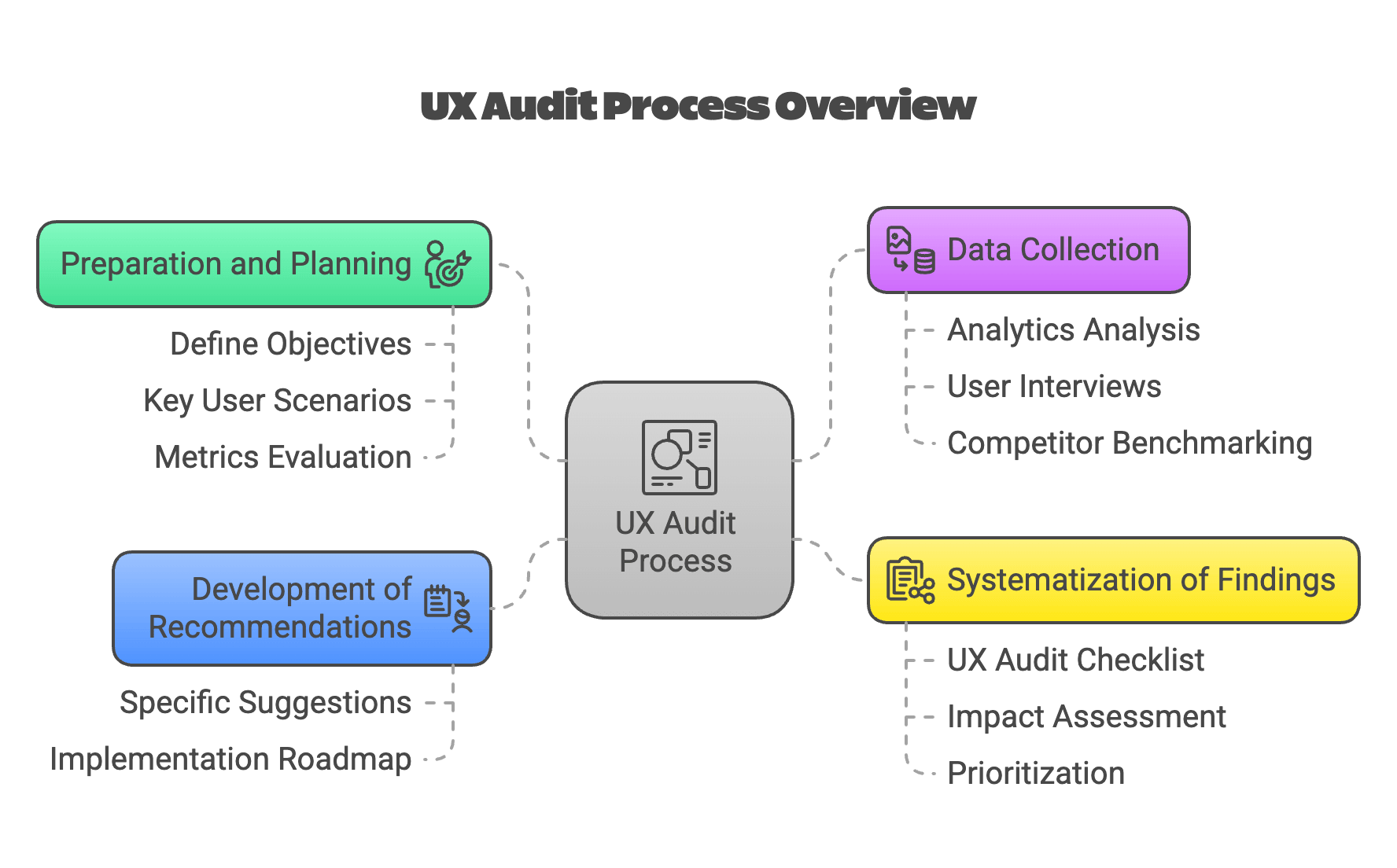UX Audits: The Smartest Investment for SaaS Growth in 2026
With rapid digitalization and increasing competition in the software-as-a-service (SaaS) market, companies seek effective ways to differentiate themselves. By 2025, the performance of SaaS offerings will hinge predominantly on their user experience (UX) quality, making it the decisive competitive advantage.
A recent UXCam study shows that investing in UX yields an impressive ROI, so remarkable that every dollar invested in user experience returns $100 to companies. In today’s market, where users demand intuitive, efficient, and enjoyable products, investment in a quality user experience drives survival and growth.
Table of Contents
What is a UX Audit and Why it’s Critical for SaaS

A UX audit delivers complete insight into the digital experience landscape by thoroughly evaluating every user-product interaction touchpoint. This methodical analysis identifies problem areas and opportunities for improving user experience.
Each SaaS UX audit is crucial due to the nature of the business model: success depends directly on service usage duration and customer retention rates. Quality user experience significantly impacts these key business metrics:
- Lower customer churn rate
- Increased conversion rates
- Increase in average revenue per user (ARPU)
- Reduction of customer support costs
UX audits should be conducted when launching a new product, after a significant redesign, when key metrics drop, before scaling to new markets, and to improve competitiveness.
Key Components of a UX Audit for SaaS Platforms
A productive UX audit for SaaS platforms should comprehensively assess all user interactions with the product. Below are four key components of the audit, each of which plays an essential role in building a holistic picture of the user experience and identifying areas for improvement.
Analyzing user paths
This audit component examines user path maps for key scenarios, analyzes exit and failure points, and evaluates the effectiveness of goal achievement. An in-depth understanding of how users navigate through the product helps identify problematic paths and improve them to increase performance.
Interface and accessibility assessment
UX design audit focuses on compliance with visual design principles, consistency of interface elements, compliance with accessibility standards, and adaptability for different devices. Even minor interface improvements significantly boost user satisfaction and product interaction efficiency.
Exploring user data and metrics
The UX audit examines analytics data, heat maps, survey results, and support calls. It focuses particularly on conversion and retention analysis, helping SaaS businesses understand how user experience drives key metrics. Identifying correlations between UX elements and business metrics justifies necessary changes.
The Process for Conducting a UX Audit
The UX audit process involves four sequential steps:

- Preparation and planning. Define audit objectives, key user scenarios, and metrics to be evaluated.
- Data collection. Various methods were used, from analytics analysis to user interviews to competitor benchmarking.
- Systematization of findings. Classifying identified issues according to a standard UX audit checklist, assessing their impact on business metrics, and prioritizing them.
- Development of recommendations. Formation of specific suggestions for improvement and creating a roadmap for implementing changes.
A clear UX audit structure ensures complete evaluation and highly efficient future improvements.
ROI from UX Audit: Figures and Perspectives
According to findings from UXCam’s research, companies see exceptional financial benefits from UX investments—each dollar allocated toward experience improvements potentially yields a hundredfold return, representing an extraordinary 9,900% gain.
Nielsen Norman Group’s analysis reveals that measuring UX investment effectiveness can be straightforward. Organizations embedding experience design into their corporate framework leverage these metrics to evaluate interface innovations and showcase their influence on performance indicators.
Practical Recommendations on Implementation of Audit Results
The results of a quality user experience audit require proper implementation. The success of implementation depends on three key factors.
Prioritization of change
Prioritize problems based on their impact and urgency. The RICE (Reach, Impact, Confidence, Effort) method allows you to objectively assess the potential return on each improvement by comparing audience reach, impact on user experience, confidence in the outcome, and effort required. Focus on high-impact, low-resource changes first to get early results quickly and build support for further improvements.
Integrating UX into the development process
Create an environment where the entire team shares responsibility for the user experience. Include UX metrics in project KPIs and organize regular presentations of user research insights for all project participants. Gradually build a culture where user insights become the basis for decision-making at all levels.
Measuring results
Track implemented changes regularly through A/B testing and key metrics. Document and visualize progress in team-accessible formats, clearly showing how UX improvements impact business metrics. Use the data collected to adjust strategy and justify future investments in user experience.
A structured approach and continuous measurement turn analytical data into actionable solutions, maximizing UX investment returns and boosting user satisfaction.
Conclusion
In 2025, user experience has become a key differentiator for SaaS companies. UX auditing provides a structured, data-driven approach to identifying issues and opportunities for improving product user interaction. Effective investment in the quality of user experience pays off many times over through improved key business metrics.
Companies that view UX not as a one-time project but as a continuous improvement process gain a significant competitive advantage. Begin with a comprehensive UX audit now to build the foundation for your SaaS business’s sustainable growth.